Creators, Makers & Doers: Driek & Michael Zirinsky
Posted on 8/12/15 by Arts & History
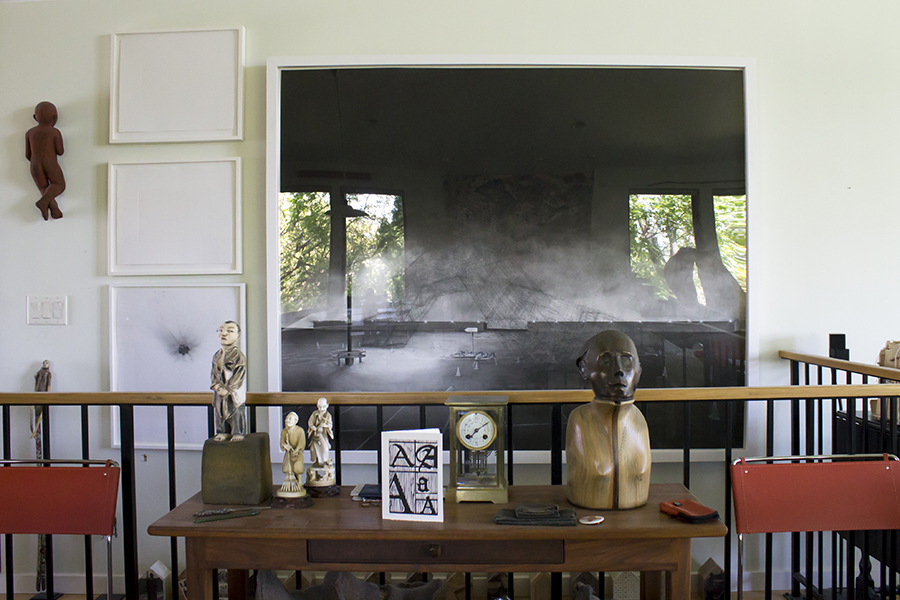
Driek and Michael Zirinsky’s tireless support and advocacy for the arts and humanities in Boise reflects their lifelong work and passions. Their vast collection of art speaks to their collective and individual interests and professions. Driek and Michael both taught as professors at Boise State University, Driek in English Education and Michael in the history of Islam and the Middle East, with a focus on Iran.
In the community, their presence is no less notable. Driek founded the Whittenberger Writing Project, helped create the Idaho Theater for Youth, and served as the president of BAM’s Board of Trustees. Michael generously lent his knowledge to communities all across Idaho through discussions related to his topics of interest in history. Together the Zirinskys support a network of local and regional artists through building relationships with them and collecting their works.
It is at this point in their lives as collectors that they are starting to find new homes for their renowned collection. The works of local and regional artists are being donated and will now be housed and displayed in some of the most premier galleries in the country.
For these reasons, they will be recognized at the Mayor’s Awards for Excellence in Arts & History for Support of the Arts.
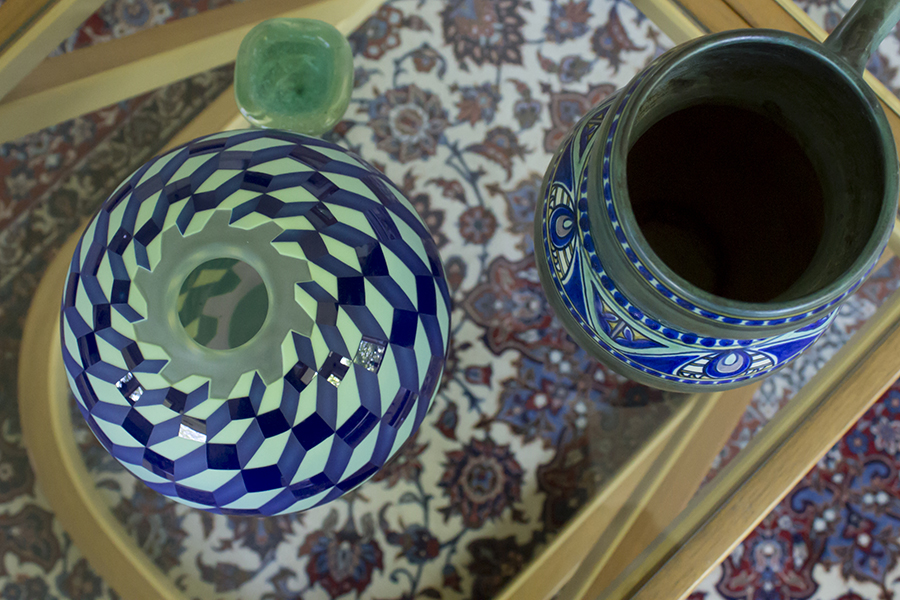
What role have the two of you played in the community here?
Driek: I have collected a lot of art, over a thousand works, many of them from Idaho and Boise artists, but also beyond Idaho in the Northwest and across the US and in Europe. I know a lot of the artists because I go to their studios and I go to their openings. I try to buy work from them. I have made it a practice to buy something out of each of the Idaho Triennials, the faculty art show at BSU, occasionally from students at BSU. It is wonderful now to be in the stage of giving away because I am able to place artists from Boise in international collections. Those works are shown side by side with artists that are internationally famous. I love doing that. For a lot of the art institutions that are more New York centric, it is a revelation to see the work because curators come here and are blown away by these artists that they have never heard of. They are very thrilled to have the work in their collections. That is my current mission. Find good homes for everything.
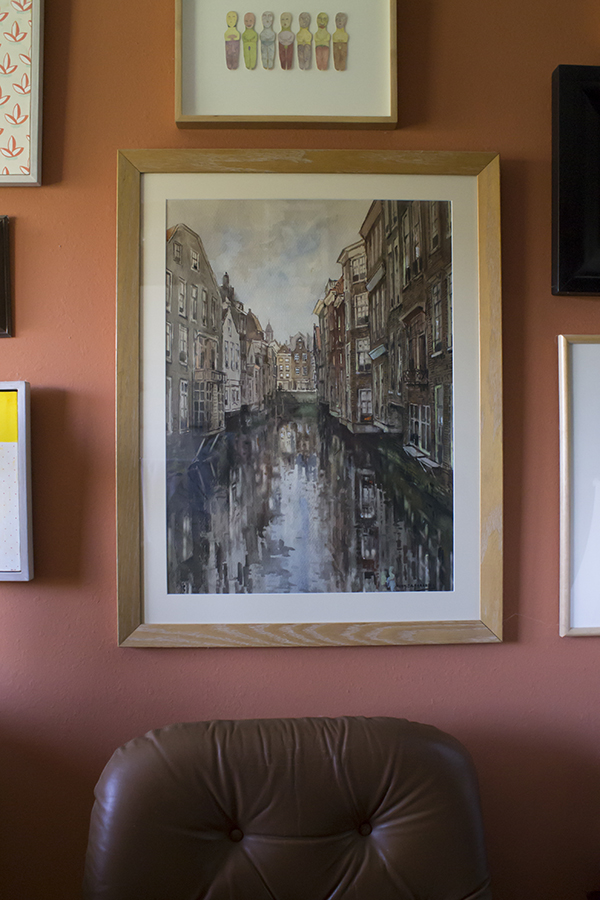
How did you get started collecting?
Driek: People ask me that a lot and I think it is a combination of things. Both of my grandfathers were collectors. My father was a collector of everything but art. He collected stamps and license plates and match book covers, menus, and ash trays from famous hotels and on and on. When we cleaned out his study, I inventoried the collections I found and there were like nineteen or twenty different collections. My father was paid in Dutch currency at the end of World War II, which was pretty worthless anywhere-, you couldn’t convert it to another currency. The rest of his family was living in the U.S. at that point, so he spent the Dutch currency by buying a portfolio of watercolor paintings by a Dutch artist and a few other things. I had one of those watercolors in my bedroom when I was growing up. When I went to college, I took it off the wall and took it down to where my father was loading the car and he looked at me and asked if I was taking the piece. He shrugged and said I guess it is yours now. It is interesting to me looking back on it, now that I know a lot more about eighteen-year-olds, I think that is an unusual thing for an eighteen year old to do. To take something hanging on the wall and being so attached to it that you want to take it to college with you.
When we were graduate students we were living in Paris and Michael had a research grant and I bought an etching that cost a whole month’s rent. It cost one hundred dollars. I guess collecting has always been of interest to me. The first time I made a little extra money here in Boise I went and bought a painting.
The first spring that I worked for the Idaho Department of Education, I had a little side consulting job and that is when I bought my first Idaho painting here in Boise. The collecting was always going on while everything else was happening.
At a certain point when we were starting to accumulate quite a bit of artwork, I thought well what am I doing? What is this about? At that point, I decided this is what I wanted to do and just threw myself into it. Then I started being more focused and deliberate about it and I started following the artists that I was interested in and started going regularly to Portland and Seattle to see new shows. I was going over in the morning and coming back at night, just for the day to see work. With the artists that I was really interested in, I would visit them when they were installing the shows, so I could have the first pick. A lot of the works I have were bought that way.
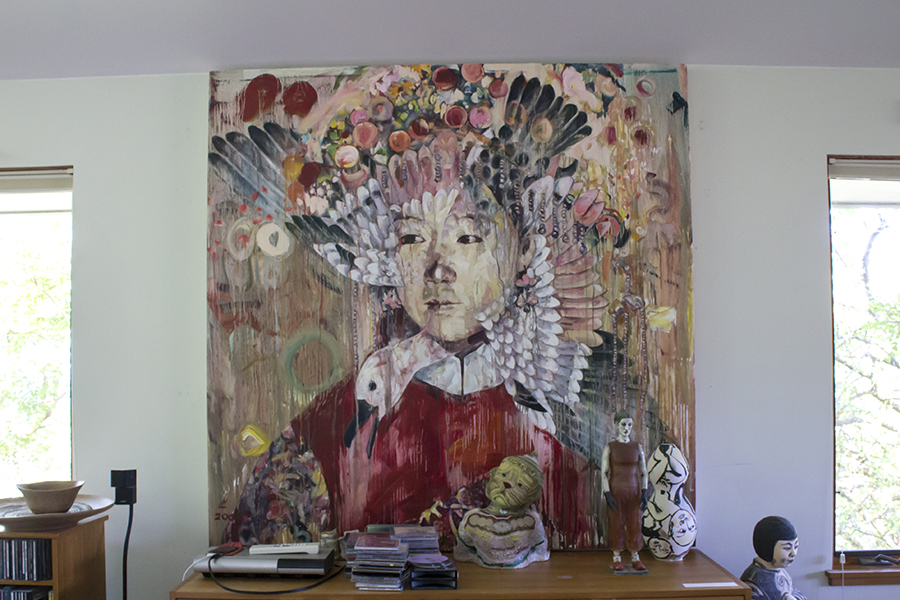
What do you look for in artwork that you want to collect?
Driek: The selection of a work is a heart-first, head-second process for me. When I do see a work, I know almost immediately that I want to collect it. I might go through some other considerations, but it is often very immediate. A lot of other collectors are much more deliberate about things, but I am not. I am an impulsive person. I know right away. When I am looking at a work and thinking about acquiring it, one of the things I think about is how it will relate to things that are already in the collection. It is kind of a curatorial process, when I am buying new work. I am pretty open to things that I have never seen before. In fact, I think that is what draws me to things. Things that are exceptional because it is a young artist doing something that I have not seen before that is fresh and innovative. I think a lot of the things that I have collected are extremely well made. That is a characteristic that I look for in whatever medium or material and something that is extremely well done. I like things that have a strong narrative in them. I also believe that collecting is autobiographical. The works feed off things that I am interested in and things that Michael is interested in.
Michael: I think there is something about the work speaking to your heart. I don’t know how you quantify that or put it into words, but the work has a life of its own, not everything that is created by an artist does, and that life talks.
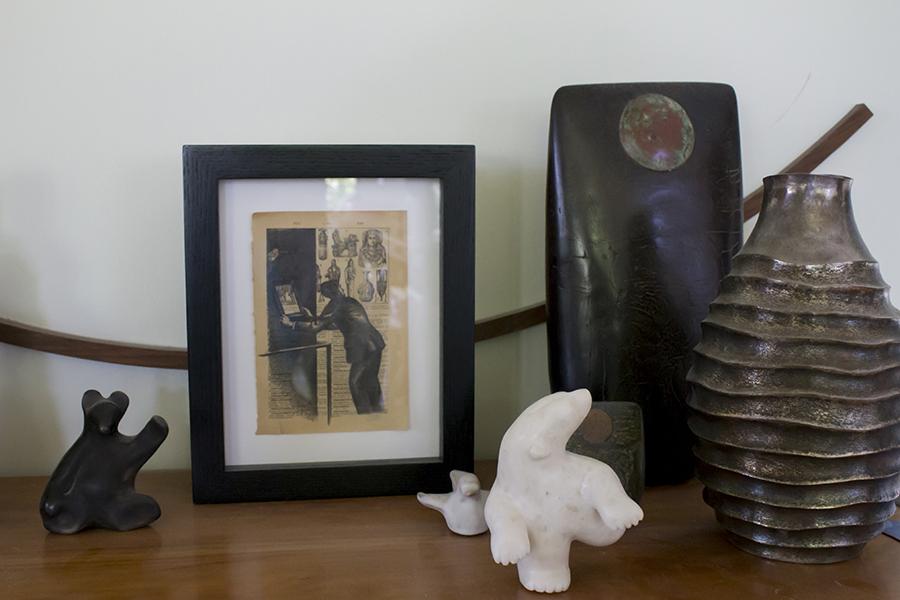
Can you elaborate upon what you think about the arts community now?
Driek: I think I am amazed at what kind of art community has evolved here. Boise seems to not be a town that will support commercial galleries very well, but artists are taking things into their own hands and finding ways to show work and to have studio space and collaborate. I feel a real vibrancy in the arts community here in Boise. Not just in the visual arts, but in all of the arts. It is a wonderful thing to see. I think Boise could be a place where artists could come to live and work because the cost of living here is reasonable. Maybe Boise will become one of those places where artists gravitate to as a place to work.
Michael: I think there has been a big change in the art department at the university too. It has always been a large department because there was a great interest in doing art among potential students. I think the quality of faculty as art makers has changed for the better by many times in the past forty years. I compare the work that is being done by the current faculty with the past work and it is like night and day.
Driek: The art department is a really big department. The department really is as big as most of the other colleges at the university. There are lots and lots of students and now they have an MFA program. Maybe a lot of the energy that is coming out in this community comes because of the big program and there are so many students studying. That may be the case.
Michael: I think it is a synergy. The demand was always there. When we came it was a large department with lots of interested students.
Driek: When I look at things that have evolved like dance, all of the different dance companies that are here, the theatres, the opera and the Philharmonic. Those two were here when we came. All of these things have really just flourished. I think there is really great community support for the performing arts.
Michael: I think it reflects the increased population size and what has cause the population to grow has been the university, but also organizations like HP and Micron who are bringing people in from all over the world and who have experiences and interests that weren’t present in the early seventies.
Driek: I think this is a vibrant artistic community.
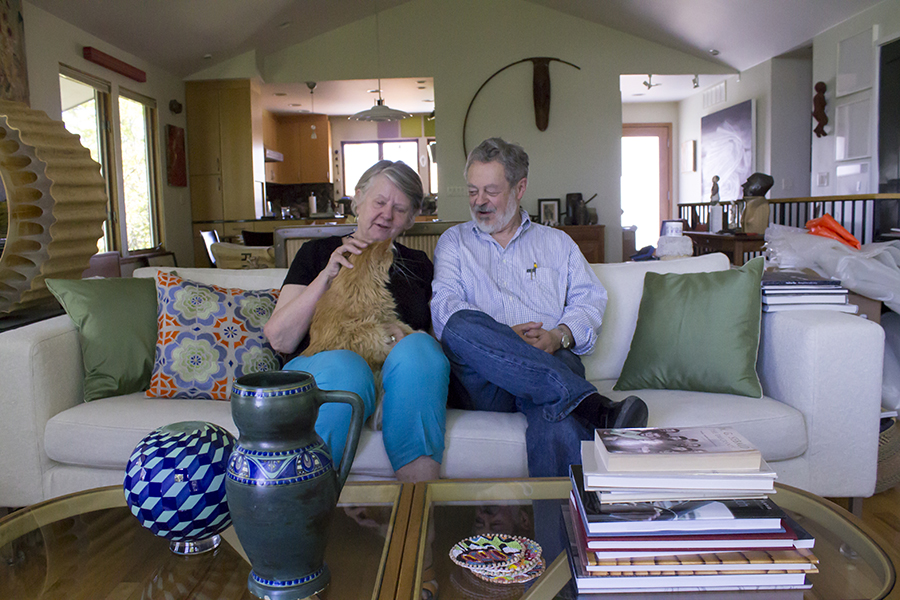
Are there any resources that are lacking here to support what you do and for artists?
Driek:From a practical standpoint, it is very hard to be a collector here at our scale because it is hard to find people who can install work in your home or build crates for shipping or pack things properly. All of the support that collectors need is severely lacking here. There was not an art appraiser available. Jane Brumfield took the course in Chicago to become a certified appraiser for the IRS. The rules about tax deductions from artwork are very strict and demanding, so she took the course so she could do some appraisals for tax purposes. Now she is taking a job in Oregon. She is keeping one foot here in Boise, but I will be her only client. That is something that is really missing. All of the things that support collectors. When our exhibit was up at Boise State we met with a number of classes there and one of the students asked me how to have a career in art and also stay in Boise. There are so many opportunities here and you may have to volunteer for a while but you just have to get your foot in the door. There are so many things going on in Boise where you can get a job in an arts related field, but there is also an entrepreneurial opportunity to open a business that does crating, framing, and other services for collectors would really be a valuable addition to the scene here. That is the practical side.
I think also, for artists, that Boise lacks a vibrant contemporary art exhibition space. Someplace where big installation can be shown, or where artists can come in and create big works. I would love to see a contemporary art space get developed here. That is definitely lacking. I have collected a good bit of video, but I have collected it elsewhere, because it is very rare to see video work around here. I would like to see an emphasis on new media. It would be a fantastic addition to Boise, whether that is a university program or some kind of collaboration with an existing program for learning about it. It could also be an exhibition space that provides the opportunity to show that kind of work.

Do you have any advice for someone who is interested in collecting?
Driek:First of all, for collectors, I don’t know why people are so reluctant to buy an artwork. It is the craziest thing to me. You can buy a gorgeous original work of art done by an artist who lives here, for less than you might spend for a new pair of shoes or dress. It is such a pleasure to live with an artwork where you can look at it every day and appreciate it every day. You can know the artist and follow their career. It is such a boost for artists if someone just buys their work. It is so affirming.